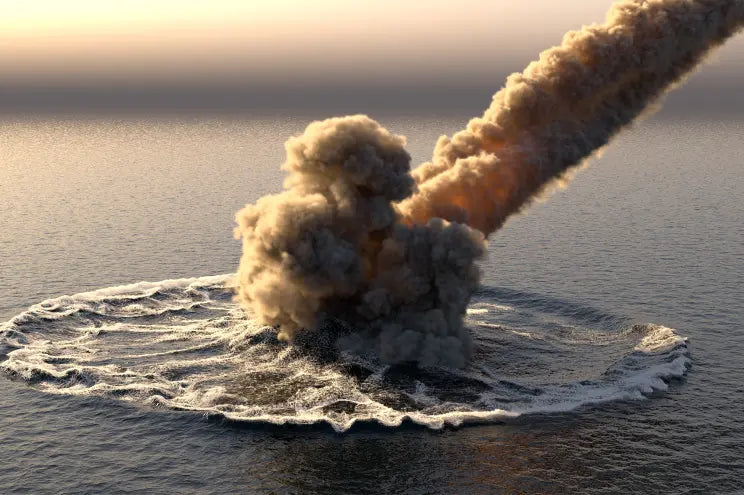
“King-Sized-Bed” Sized Magnet to retrieve Comet that Struck Manus.
Share
A small meteorite from another star system that crashed into the Pacific Ocean with energy equivalent to about 110 metric tonnes of TNT is being targeted by astronomers for landing on Earth.
The Harvard team hopes to find fragments of CNEOS 2014-01-08, an interstellar rock that collided with Earth on Jan. 8, 2014.
"Finding such a fragment would represent the first contact humanity has ever had with material larger than dust from beyond the solar system," Amir Siraj, an astrophysicist at Harvard University and the first author of a new paper published on the non-peer-reviewed preprint service ArXiv on CNEOS 2014-01-08.

The meteorite fragments are thought to be 300 kilometres north of Manus Island (marked in red) in the Bismarck Sea in the southwest Pacific Ocean.
(Image credit: Map Data Copyright 2022 Google)
Despite Siraj's 99.999% confidence in the object's interstellar origin, it wasn't until May 2022 that Siraj was confirmed by the United States Space Command. There are no known witnesses to the object striking Earth.
"It struck the atmosphere about a hundred miles [160km] off the coast of Papua New Guinea in the middle of the night, with about 1% the energy of the Hiroshima bomb," Siraj said.
CNEOS 2014-01-08 has now been identified as our solar system's first interstellar object, measuring just 0.5 metres wide.
Previously, the title belonged to an oblong object called 'Oumuamua'. A space rock was discovered in 2017 during the Pan-STARRS sky survey, zipping through our solar system at 92,000 km/h. Harvard astrophysicist Avi Loeb, a colleague of Siraj, believes it might be an alien machine. Amateur astronomer Gennadiy Borisov discovered Comet 2I/Borisov in Crimea in 2019, following 'Oumuamua's discovery.
Since CNEOS 2014-01-08 traveled at 60 kilometres per second relative to the sun, it is believed to be from another star system. It is too fast to be confined by the gravity of the sun.
"At the Earth's distance from the sun, any object traveling faster than about 42 kilometers per second is on an unbounded, hyperbolic escape trajectory relative to the sun," Siraj said. "This means that CNEOS 2014-01-08 was clearly exceeding the local speed limit for bound objects [and] it didn't cross paths with any other planets along the way, so it must have originated from outside of the solar system."

The Galileo Project, headed by Siraj and Loeb, aims to lower a magnet the size of a king-size bed to 1.3 degrees south, 147.6 degrees east, the Department of Defense's location of the meteorite's resting spot. In the southwest Pacific Ocean, that's about 300 km north of Manus Island.
According to Siraj, CNEOS 2014-01-08 possesses greater material strength than a typical iron meteorite, which should make it easier to recover. The strength of a material refers to its ability to resist deformation or damage under load. "Most meteorites contain enough iron that they will stick to the type of magnet we plan on using for the ocean expedition," he said. "Given its extremely high material strength, it is very likely that the fragments of CNEOS 2014-01-08 are ferromagnetic."
In Papua New Guinea, a magnetic sled will be towed on a longline winch by the Galileo Project's ship for 10 days along the seabed. The magnet may be able to recover fragments as small as 0.1 mm in diameter of the meteorite.
Despite this, it is unclear when the astronomers will be able to mount their expedition. A total of US$500,000 has already been committed to the Galileo Project, with a further $1.1 million needed to realize the project. According to Siraj, that's a good price compared to a space mission.
"The alternative way to study an interstellar object at close range is by launching a space mission to a future object passing through the Earth's neighbourhood," said Siraj, who with Loeb is also working out the details of such a mission should another object like 'Oumuamua’ appears in the solar system. "But that would be 1,000 times more expensive at about $1 billion."
QUESTION: Is the study worth the investment?
Or could it be put to better use outside of Manus?
Let us know in the comments and keep thrusting Australia into the deep unknown…
#Space_Aus




